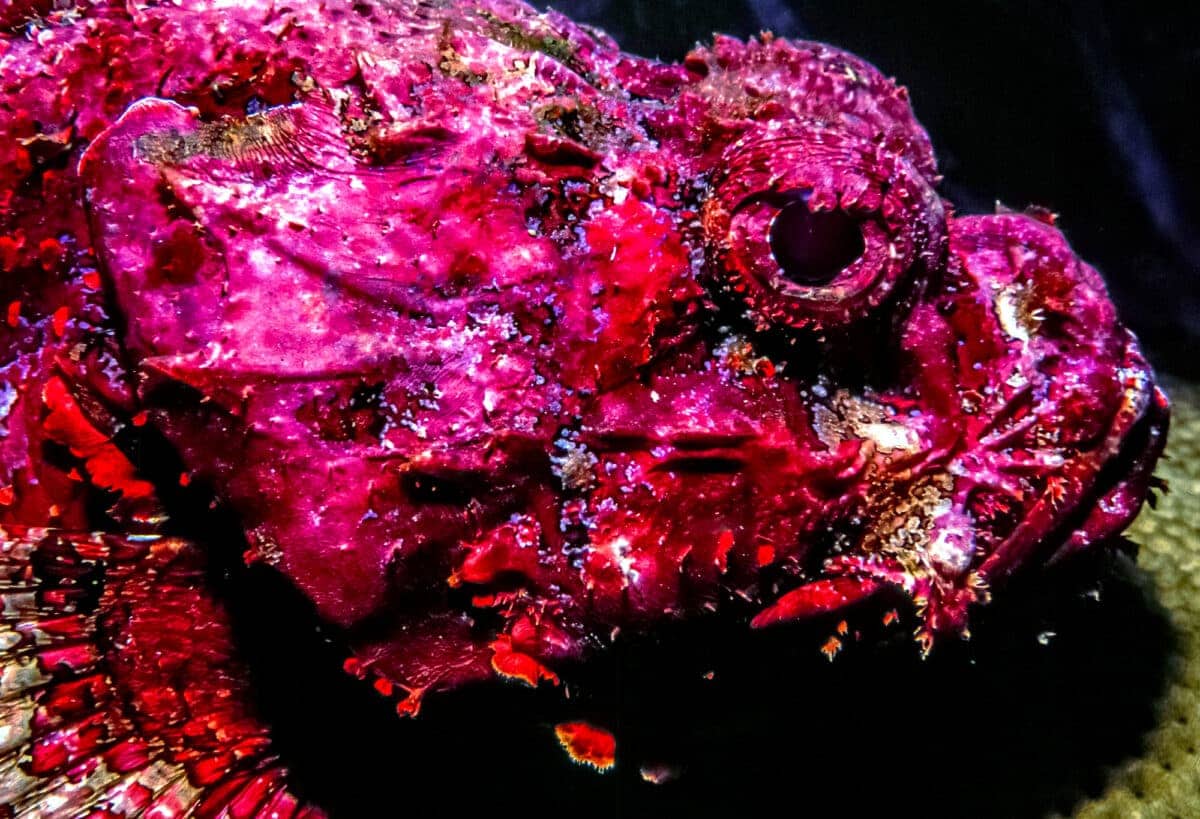Hidden beneath the shimmering depths of the ocean lies a creature of unparalleled danger, lurking amidst coral reefs and sandy seabeds. The creature in question is the notorious stonefish, widely recognized as the most venomous marine animal on the planet. Additionally, with its cryptic camouflage and venomous spines, this underwater assassin poses a grave threat to unsuspecting divers and marine life.
In this article, we delve into the treacherous world of the deadly stonefish, exploring its formidable characteristics, venomous arsenal, and the chilling encounters that have earned it the title of the ocean’s most evil predator. So, brace yourself for a journey into the dark, dangerous waters where the stonefish reigns supreme.

Jump ahead to any section below!
Characteristics Of The Stonefish
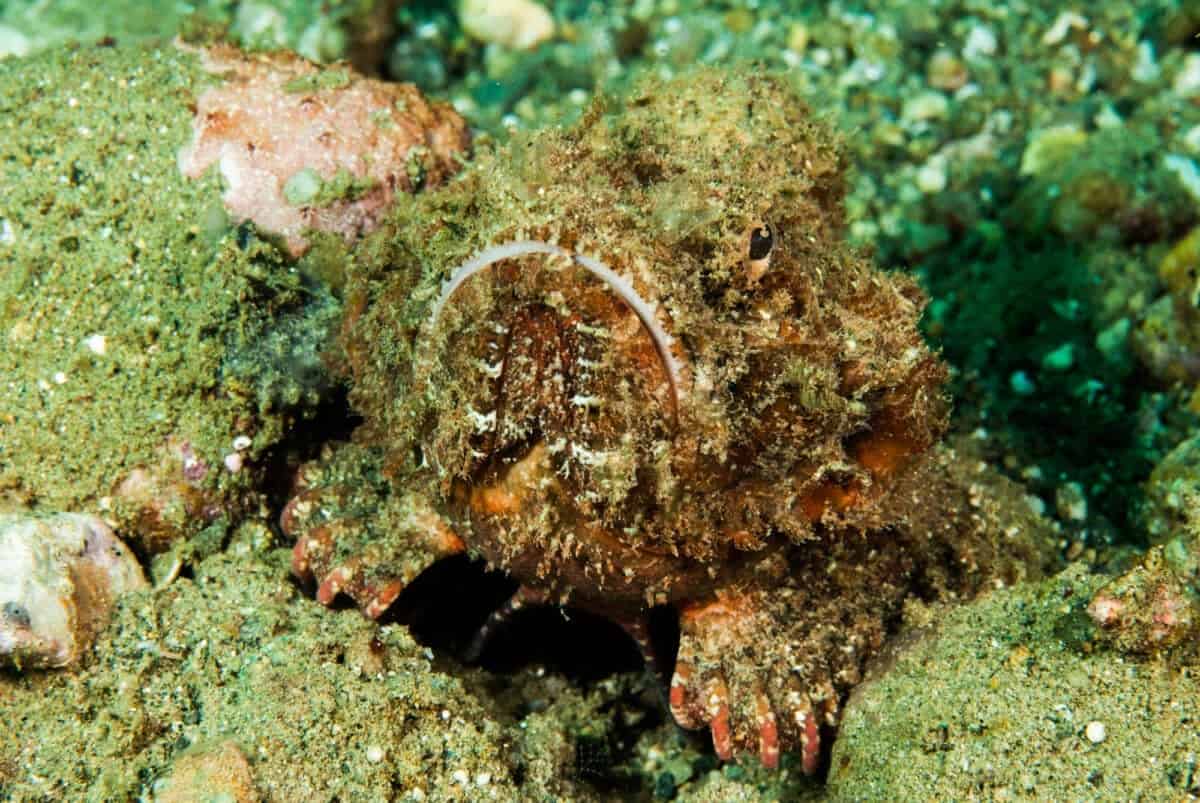
The Stonefish (Synanceia) is known as one of the most venomous fish in the world and is commonly found in the coastal regions of the Indo-Pacific, particularly in the waters of the Pacific Ocean and the Indian Ocean. Furthermore, there are several notable characteristics of the Stonefish:
Appearance
Firstly, stonefish are typically small to medium-sized fish, ranging from 10 to 20 centimeters (4 to 8 inches) in length. Additionally, they have stout and stocky bodies covered in intricate, textured patterns that help them blend in with their surroundings. Their coloration can also vary from brown, gray, or yellow to olive or mottled shades, which aids in camouflaging them among rocks and coral.
Check out: Great White Shark Vs. Bull Shark.
Venomous Spines

Secondly, one of the most distinctive features of the Stonefish is its venomous spines. The Stonefish is equipped with a set of thirteen dorsal spines located on its back, and these spines are also directly linked to venom glands. These spines are sharp and strong, and when threatened or disturbed, the Stonefish erects its spines as a defense mechanism. These spines then can cause excruciating pain and other severe symptoms if they contact a human or predator.
Camouflage
Stonefish possess remarkable camouflage abilities, enabling them to blend in with their surroundings seamlessly. Moreover, through their capacity to alter their coloration, they effectively mimic the appearance of rocks, corals, and sandy seabeds, rendering them nearly indistinguishable from their environment. Furthermore, their ability to camouflage allows them to remain concealed and ambush unsuspecting prey.
Check out: The World’s Largest Land Predator: The Polar Bear.
Benthic Lifestyle
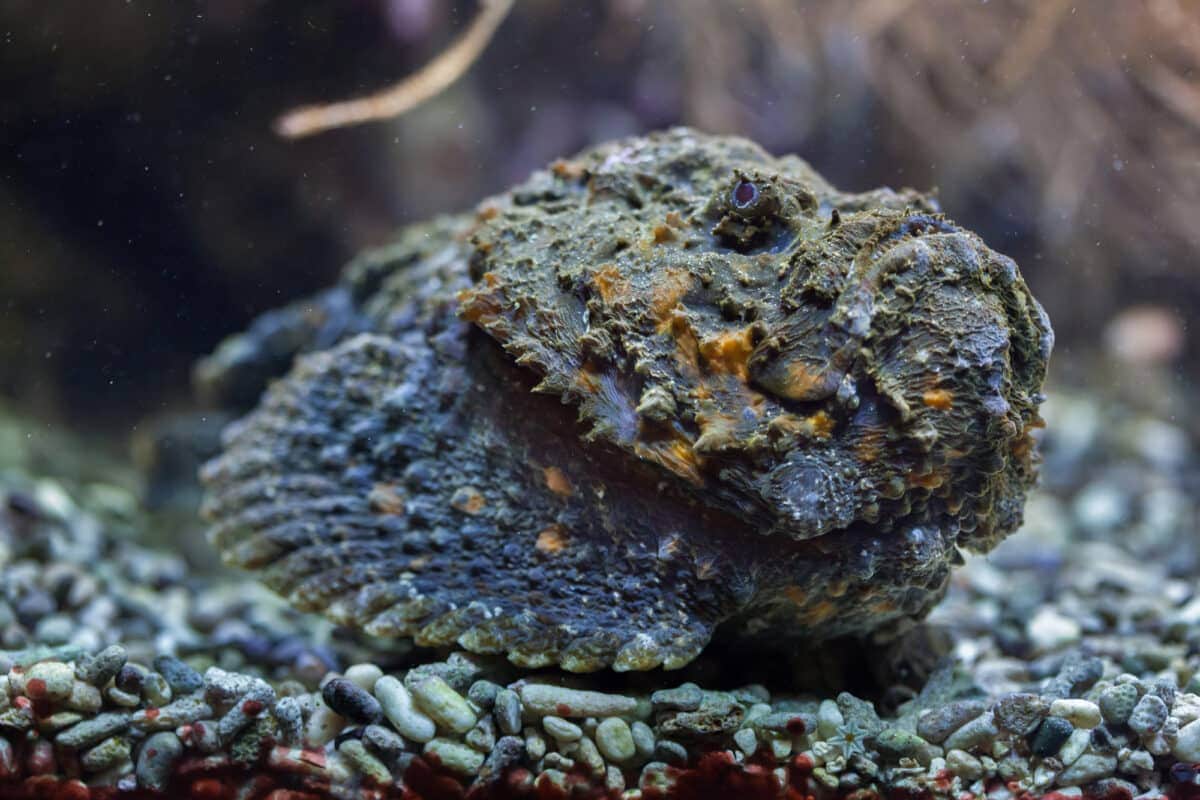
Additionally, stonefish are characterized as benthic organisms, indicating their preference for residing near the ocean floor and engaging in resting and slow movement within this habitat. Their flat body shape and ability to burrow partially into the substrate also help them remain hidden from predators and prey.
Venomous Nature
The venom of the Stonefish is highly potent and is primarily used for hunting and defense. When an unsuspecting organism, such as a small fish or crustacean, comes into contact with the Stonefish’s venomous spines, the venom is injected, leading to paralysis and death. The stonefish’s venom is highly potent and contains a powerful neurotoxin that targets the nervous system. Its effects on humans include intense pain, tissue necrosis, swelling, complications in the cardiovascular system, and, in severe instances, it can even result in fatality.
Check out: Great White Shark vs. Nile Crocodile.
Nocturnal Behavior
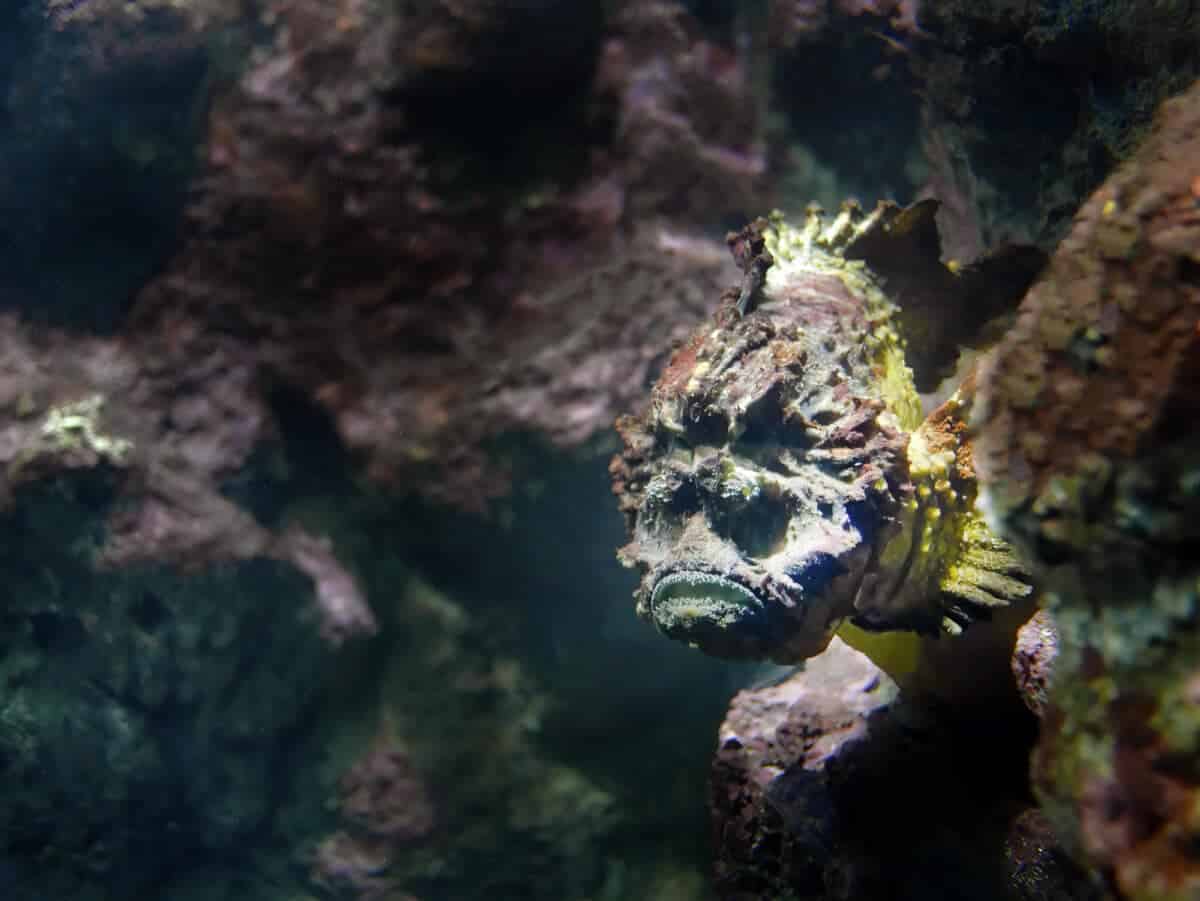
Stonefish are predominantly nocturnal, meaning they are more active during nighttime hours. They often remain stationary during the day and become more active at dusk, hunting for prey under the cover of darkness.
Feeding Habits
Lastly, the stone fish is an ambush predator that relies on its excellent camouflage to catch its prey. Furthermore, its feeding habits are primarily carnivorous, and consume small fish and invertebrates.
Overall, the stone fish’s diet primarily consists of small fish, crustaceans, and other invertebrates that inhabit the same coastal habitats. Its ability to blend in with its surroundings and remain perfectly still allows it to surprise and capture unsuspecting prey items that venture too close.
Habitat
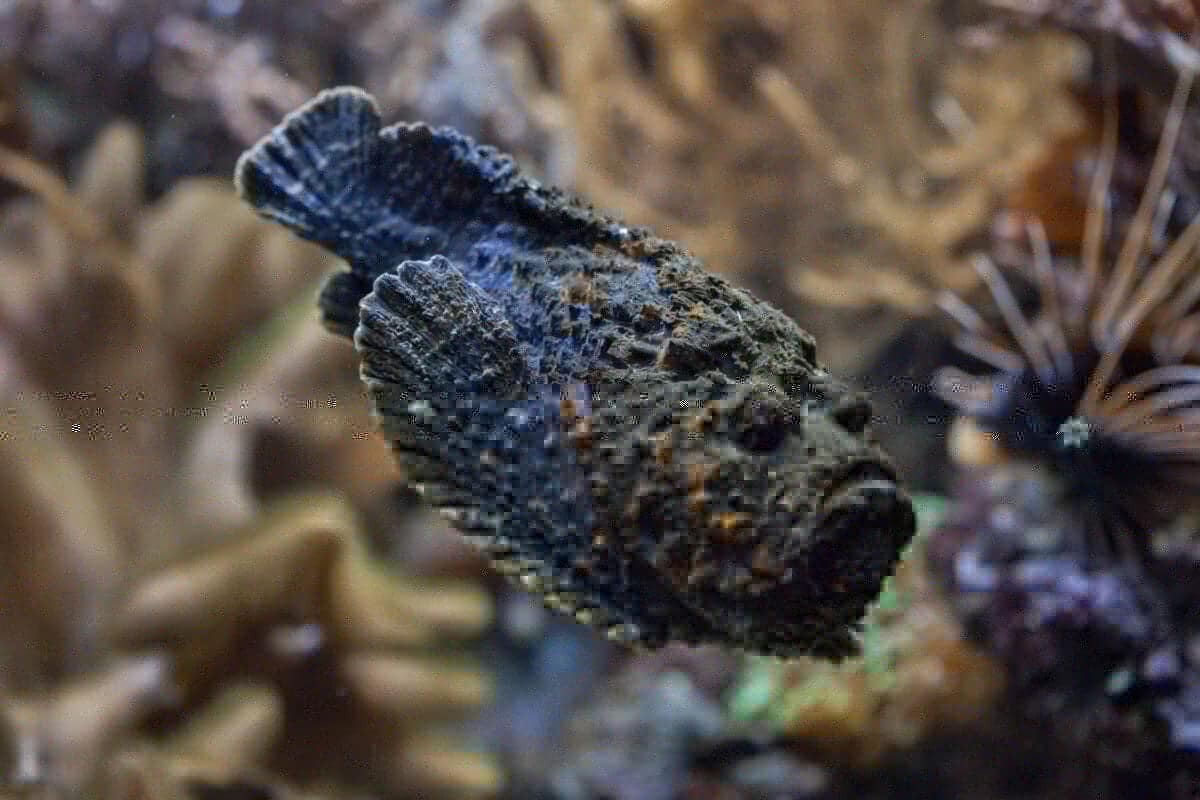
The stone fish is primarily found in shallow coastal waters, including reefs, rocky areas, tide pools, and estuaries. It also prefers habitats with sandy or muddy bottoms where it can bury itself partially, leaving only its eyes and venomous spines exposed. The exact distribution of stone fish species may vary.
Still, they are commonly found in areas such as the Red Sea, Indian Ocean, and the Pacific Ocean, including countries like Australia, Indonesia, Thailand, Malaysia, Vietnam, Philippines, and Papua New Guinea. They can inhabit saltwater and brackish water environments but are rarely found in freshwater habitats.
The Stonefish’s Venomous Spines And Their Purpose
The stonefish is widely recognized as one of the most venomous fish in the world. It possesses venomous spines as a defense mechanism against potential predators and a means to capture prey. Here’s some information about the stonefish’s venomous spines and their purpose:
- Defense Against Predators
The primary purpose of the stonefish’s venomous spines is to defend itself from predators. When threatened or disturbed, the stonefish can raise its dorsal spines lined with venomous glands. If an attacker comes into contact with these spines, the venom is injected into their flesh, causing intense pain and potentially leading to severe injury or death.
- Protection
Stonefish have excellent camouflage abilities, blending seamlessly with their surroundings, such as coral reefs or sandy ocean floors. Their venomous spines, which resemble rocks or coral, contribute to this camouflage and are protective mechanisms. They lie motionless, relying on their camouflage to remain undetected by predators or unsuspecting prey.
- Hunting And Prey Capture
The venomous spines of the stonefish also play a crucial role in capturing prey. Stonefish are ambush predators, patiently waiting for prey to swim by before striking rapidly. They use their venomous spines to immobilize and paralyze their prey, injecting venom into the unfortunate victims. The venom contains toxins that affect the nervous system, causing paralysis and making it easier for the stonefish to consume its prey.
Potency And Effects Of The Venom On Humans
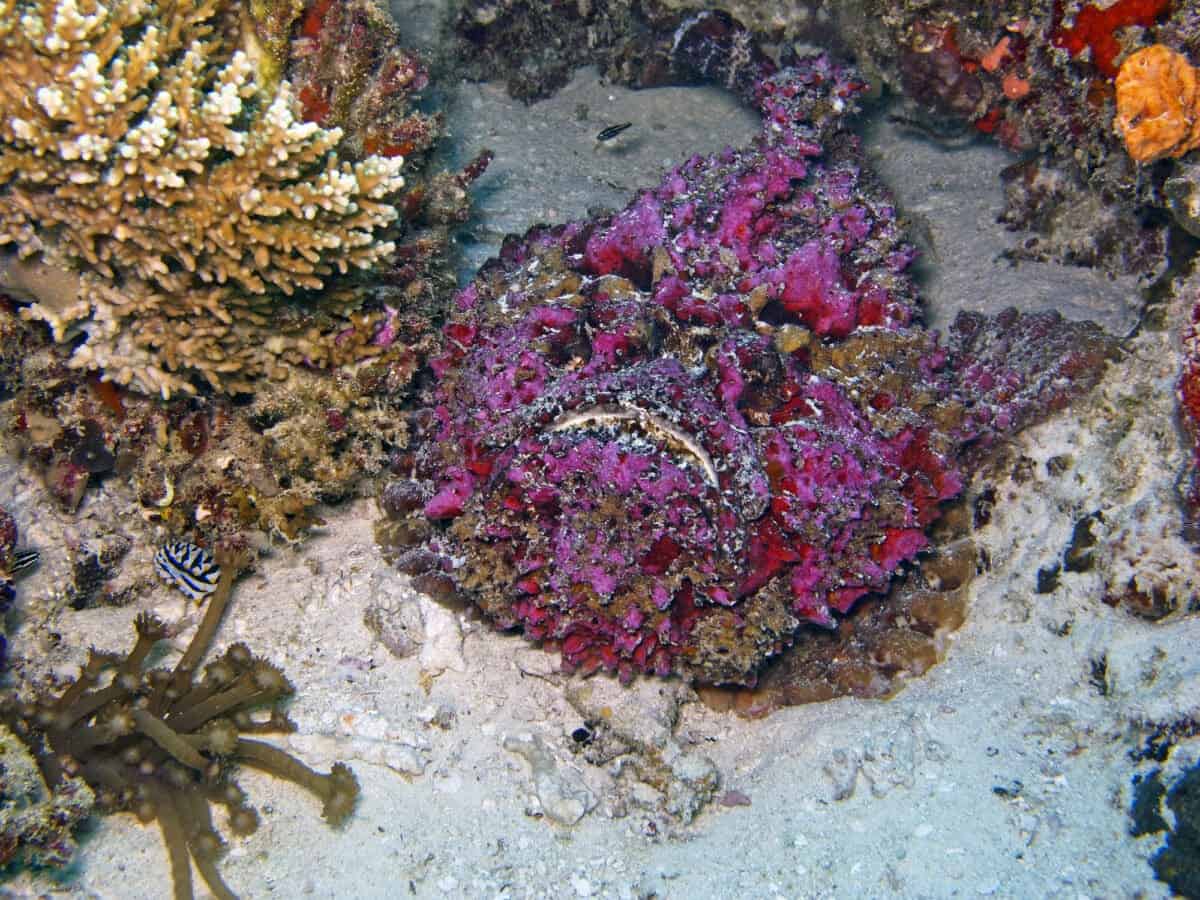
The stonefish’s venom is considered one of the most potent venoms among marine creatures. Here are some details about the potency and effects of stonefish venom on humans:
Check out How Toxic is the Stonefish?
- Potency
Stonefish venom is highly potent and can cause severe symptoms in humans. It comprises a mixture of protein-based toxins, including neurotoxins and cardiotoxins.
- Mode Of Delivery
Stonefish have thirteen sharp dorsal fin spines that are venomous. When stepped on or threatened, they raise these spines, injecting venom into the victim through grooves along the spines.
- Immediate Pain
The venom of a stonefish causes excruciating pain at the site of the injury almost immediately. The discomfort experienced is frequently characterized as severe and pulsating.
- Local Effects
The venom has the potential to cause harm to the surrounding tissues, resulting in swelling, inflammation, and damage in the area near the wound. The affected area may become discolored and develop blisters or necrotic tissue.
- Systemic Effects
The systemic effects caused by stonefish venom can vary depending on factors such as the quantity of venom injected, the site of the injury, and the individual’s sensitivity. Some of the systemic effects may include:
- Nausea, vomiting, and abdominal pain
- Sweating and dizziness
- Headache and malaise
- Muscle weakness and tremors
- Breathing difficulties and respiratory distress
- Increased heart rate and irregular heartbeat
- Potential Complications
In severe cases, stonefish envenomation can lead to complications such as cardiovascular collapse, shock, and even death, although fatalities are rare.
Immediate Medical Implications And Treatment Of Stonefish Envenomation
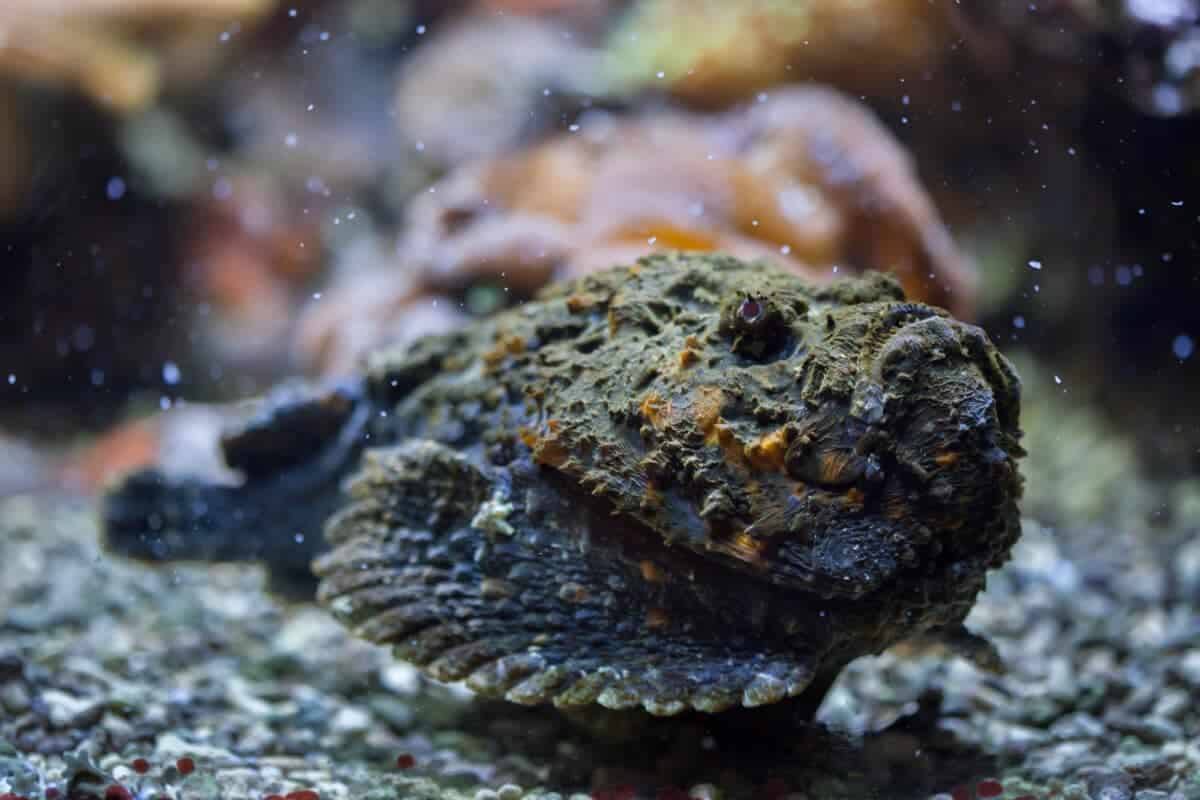
Immediate medical attention is essential for stonefish sting victims. The recommended initial treatment for a stonefish sting involves submerging the affected area in warm water, ideally between 45-50 degrees Celsius, for around 30 to 90 minutes. This method is effective in relieving pain and assisting in the breakdown of the venom. Pain relief, wound care, and supportive measures are provided in a medical facility.
Preventive Measures And Safety Precautions To Avoid Encounters
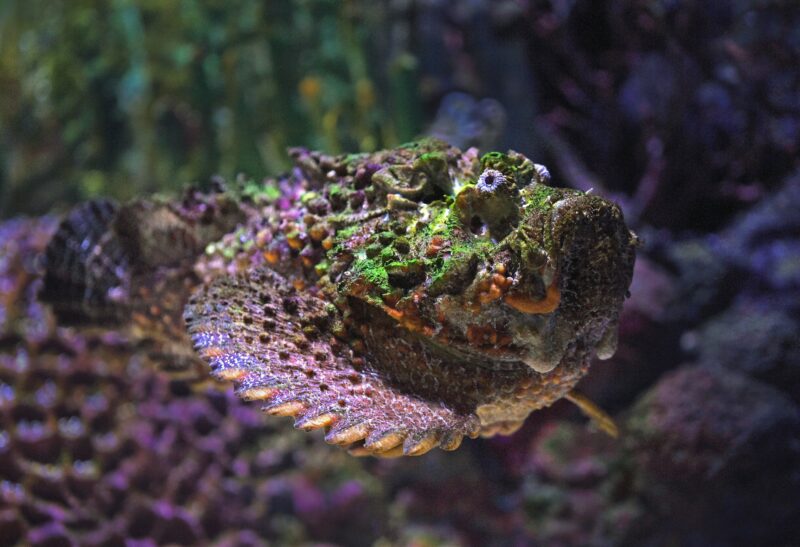
It is crucial to follow specific preventive measures and safety precautions to stay safe and prevent dangerous encounters with stonefish. These actions will help ensure your well-being in the presence of one of the world’s most venomous fish. Here are some recommendations:
- Be Aware Of Their Habitat
Stonefish are typically found in the shallow waters of the tropical and subtropical regions, particularly in the Indo-Pacific region. If you are in an area with stonefish, exercise caution and be vigilant.
- Wear Protective Footwear
When walking in shallow water, especially near rocky or coral areas, always wear thick-soled footwear such as reef shoes or dive boots. These will provide a physical barrier between your feet and the fish.
- Observe The Surroundings
Before entering the water, carefully inspect the area for any signs of stonefish. Look out for their distinctive appearance, which resembles a rock or coral. Due to their exceptional camouflage abilities, stonefish have a remarkable talent for blending seamlessly with their environment, making them incredibly challenging to detect.
- Move Slowly And Shuffle Your Feet
When wading through the water, move slowly and avoid sudden movements. Shuffling your feet along the sandy or rocky bottom can create vibrations that scare away stonefish, as they rely on camouflage and ambush for hunting.
- Seek Professional Guidance
If you visit an area with stonefish or other venomous marine life, you should seek guidance from local dive operators, lifeguards, or marine experts. They can provide valuable information about the presence of stonefish and tips on how to avoid encounters.
- First Aid And Medical Attention
In the unfortunate event of a stonefish sting, it is crucial to seek immediate medical attention. Familiarize yourself with first aid procedures for marine envenomation, such as immersing the affected area in hot water (not scalding) to help alleviate pain.
F.A.Qs
The stone fish’s venom contains a potent mix of toxins that affect the nervous system, causing paralysis and respiratory distress in its prey. This immobilizes the prey, allowing the stone fish to easily capture and consume it.
The stone fish possesses potent venomous spines on its dorsal fin, capable of delivering excruciating pain and potentially lethal effects if stepped on or handled.
The stone fish has remarkable camouflage abilities, resembling a rock or coral. Its mottled appearance and ability to change color allow it to blend seamlessly with its surroundings, making it an expert ambush predator.
Key Points
| The stonefish is the most venomous marine animal known to man, found in the coastal regions of the Indo-Pacific. |
| It possesses venomous spines connected to glands, which cause excruciating pain and severe symptoms if they come into contact with humans or predators. |
| The stonefish has remarkable camouflage abilities, blending with rocks, corals, and sandy seabeds. |
| It is a benthic creature that primarily dwells on the ocean floor, remaining hidden from predators and prey. |
| Stonefish are predominantly nocturnal and use their venomous spines to capture small fish and invertebrates, their primary food sources. |
Wrap Up
In conclusion, the deadly stonefish is a formidable predator that commands respect and caution from all who venture into the ocean’s depths. It’s cryptic camouflage and venomous spines also make it a lethal force to be reckoned with, placing it at the top of the food chain in its underwater world. By understanding the stonefish’s characteristics, behaviors, and venomous arsenal, divers and marine enthusiasts can equip themselves with the knowledge necessary to stay safe and protected, ensuring that they can continue to explore the wondrous mysteries of the ocean while avoiding encounters with this deadly predator.
Thanks for reading along! See below for similar article links.
Next up: Observe the Longest Lived Species of Shark: The Greenland Shark, Gorilla Vs. African Forest Buffalo, Exploring The Enchanting World Of Baleen Whales, Explore Washington’s Cougar Population, and Explore Illinois’s Black Bear Population.
Join our Forum for free today!

- Huge Pet Bison Breaks Into House - July 22, 2024
- Giant Black Bear Surprises Beachgoers by Emerging from the Ocean in Florida - July 22, 2024
- Brave Man Plays Instrument While Huge Bear Caresses His Shoulder - July 22, 2024

